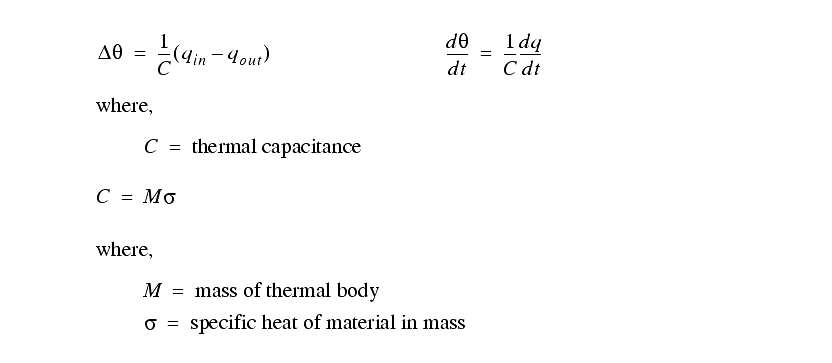25.2 MATHEMATICAL PROPERTIES
������������25.2.1 Resistance
������������A universal property of energy is that it constantly strives for equilibrium. This means that a concentration of energy will tend to dissipate. When material separates regions of different temperatures it will conduct heat energy at a rate proportional to the difference. Materials have a measurable conductivity or resistance (note: this is different than electrical conductivity and resistance.)

When dealing with thermal resistance there are many parallels to electrical resistance. The flow of heat (current) is proportional to the thermal difference (voltage). If we have thermal systems in parallel or series they add as normal resistors do.

25.2.2 Capacitance
������������Heat energy is absorbed at different rates in different materials - this rate is referred to as thermal capacitance. And as long as the material has no major changes in structure (i.e., gas-solid or phase transition) this number is relatively constant.

One consideration when dealing with heating capacitance is that the heat will not instantly disperse throughout the mass. When we want to increase the rate of heat absorption we can use a mixer (with a gas or fluid). A mixer is shown in the figure below. This mixer is just a rotating propeller that will cause the liquid to circulate.

25.2.3 Sources
������������If we plan to design a thermal system we will need some sort of heat source. One popular heating source is an electrical heating element.
heating coils are normally made out of some high resistance metal/alloy such as nichrome (nickel and chrome) or tungsten.
If we run a current through the wire the resistance will generate heat. As these metals get hotter the resistance rises, hence the temperature is self regulating. If we control the voltage and current we can control the amount of heat delivered by the coil.
